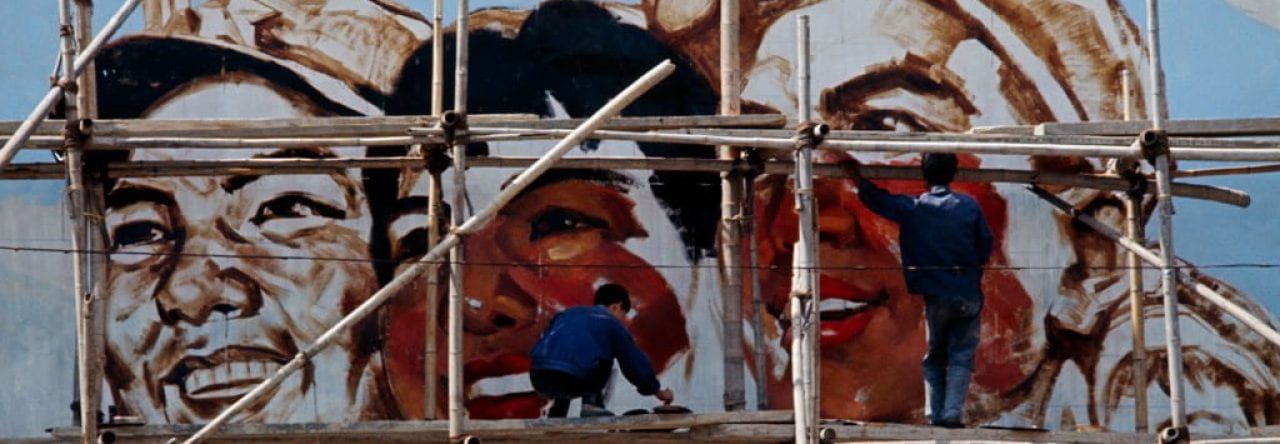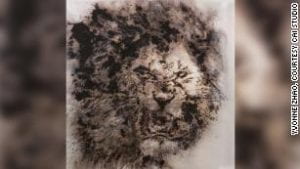My first artwork is Chairman Mao Visits a Homemade Blast Furnace designed by Zhou Xuefen and Yin Quanyuan. It was created in November of 1958 and depicts Mao Zedong the then Chairman of the CCP (Chinese Communist Party) watching some people use a homemade furnace. This piece was created for the Communist Party during the first year of the Great Leap Forward, a plan to increase industry and agriculture to hopefully compete with Great Britain. Homemade blast furnaces were utilized during the Great Leap Forward to smelt metal in peoples homes for steel. In this image Mao is seen as an everyman who like everyone else is helping to smelt objects down for steel. This can be personified by the slacks and being close to the workers. This image is also shows hard work from by the sweat rags around two peoples neck and the smoke coming from the furnace. These ideas of heat and sweat are a symbol of hard work. This work also goes to show Mao as a cult of personality with the crowd of people behind him staring and are seemingly amazed by his hard work. One of the reasons for the Great Leap Forward is the idea of keeping up with the western powers so one of the details in the image is the graph that show significant increases. This goes to show how successful the Great Leap Forward is even if the graph growth is not happening in the real world this piece of propaganda will make it seem like smelting is good for the economy and therefore China. We know now that the homemade smelting of personal items never really increased the progress of China. The cartoonist imagery makes it easy to digest for an average person and will get them to support the CCP just like Mao is doing. While this image may depict a thing Mao actually did it may exaggerate how much he did.

Works Citied
Quanyuan Yin, & Xuefen Zhou (1958). Chairman Mao Visits a Homemade Blast Furnace. Chineseposters.net. Retrieved April 24, 2023, from https://chineseposters.net/posters/pc-1958-007
J., Andrews (2012). The art of modern China. Retrieved from https://hdl.handle.net/2027/heb32156.0001.001.
M., Chiu, & S. T., Zheng (2009). Art and China’s revolution. Asia Society.










